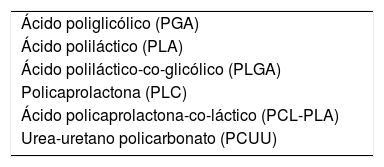La reconstrucción vesical es el procedimiento para sustituir o ampliar la vejiga, siendo el intestino el tejido utilizado en la práctica clínica habitual. Las complicaciones de su uso van desde las propias de una resección intestinal hasta las resultantes del contacto continuo de la orina con un tejido no preparado para ello. En este artículo se describen y clasifican los diferentes biomateriales y cultivos celulares utilizados en la ingeniería tisular vesical y se revisan los estudios realizados en humanos.
Adquisición de la evidenciaSe ha realizado una revisio¿n de la literatura publicada en la base Pubmed entre 1950 y 2017, siguiendo los principios de la declaracio¿n PRISMA.
Síntesis de la evidenciaSe han realizado múltiples estudios in vitro y en modelo animal, pero solo se han realizado 18 experimentos en humanos, con un total de 169 pacientes. La pruebas actuales indican que utilizar una matriz acelular o bien un polímero sintético y adherirle in vitro células uroteliales y musculares lisas autógenas, o bien células madre, sería la aproximación más realista para realizar una reconstrucción vesical experimental.
ConclusionesLa sustitución o ampliación vesical sin utilizar intestino continúa siendo hoy un reto, a pesar del progreso en la fabricación de biomateriales y del desarrollo de la terapia celular. Para plantear una traslación clínica efectiva será necesario en el futuro realizar estudios bien diseñados, con mayor número de pacientes y tiempo de seguimiento, además de estandarizar las pruebas funcionales de control.
Bladder reconstruction is performed to replace or expand the bladder. The intestine is used in standard clinical practice for tissue in this procedure. The complications of bladder reconstruction range from those of intestinal resection to those resulting from the continuous contact of urine with tissue not prepared for this contact. In this article, we describe and classify the various biomaterials and cell cultures used in bladder tissue engineering and reviews the studies performed with humans.
Acquisition of evidenceWe conducted a review of literature published in the PubMed database between 1950 and 2017, following the principles of the PRISM declaration.
Synthesis of the evidenceNumerous in vitro and animal model studies have been conducted, but only 18 experiments have been performed with humans, with a total of 169 patients. The current evidence suggests that an acellular matrix, a synthetic polymer with urothelial and autologous smooth muscle cells attached in vitro or stem cells would be the most practical approach for experimental bladder reconstruction.
ConclusionsBladder replacement or expansion without using intestinal tissue is still a challenge, despite progress in the manufacture of biomaterials and the development of cell therapy. Well-designed studies with large numbers of patients and long follow-up times are needed to establish an effective clinical translation and standardisation of the check-up functional tests.
Artículo
Comprando el artículo el PDF del mismo podrá ser descargado
Precio 19,34 €
Comprar ahora













